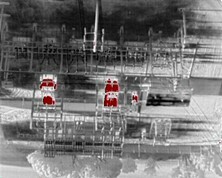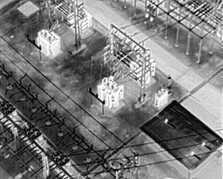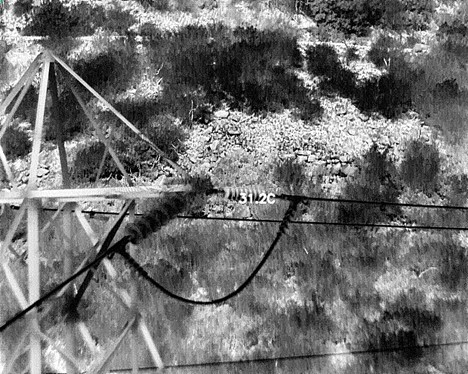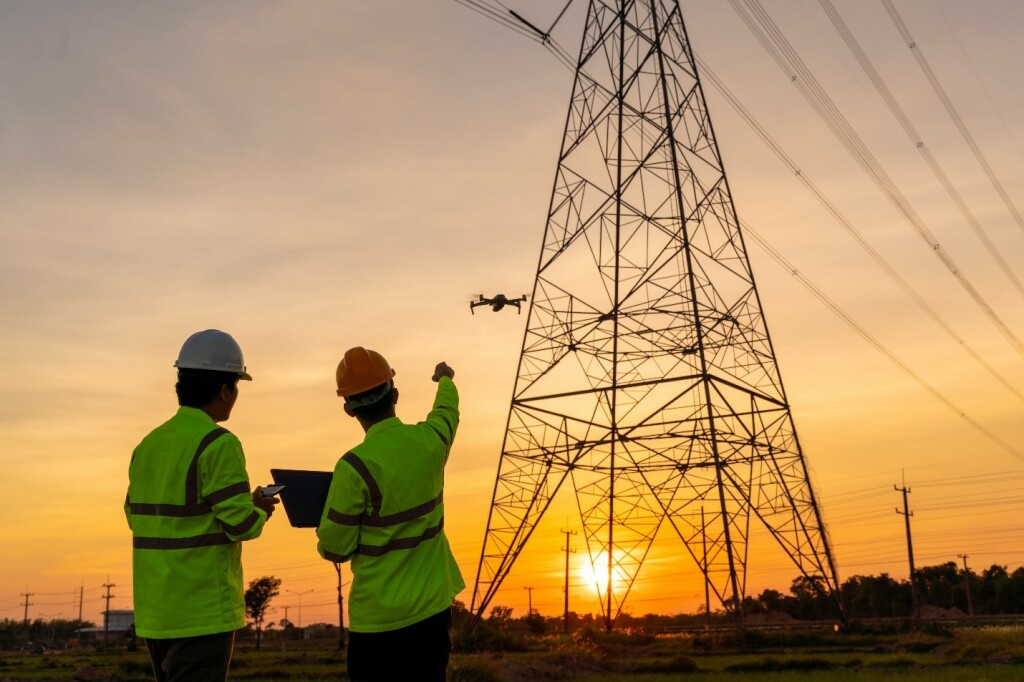Inspecting electrical systems with infrared imaging cameras has been a vital part of keeping electrical generation, transmission, and distribution systems up and running for decades. The latest advances in drone imaging technology have elevated this application to a whole new level and seen increasing adoption.
Why Use Thermal for Drones
Whether inspecting substations, switchyards, or transmission and distribution lines, there are scores—if not hundreds—of connections, fused disconnects, insulators, splices, dead ends, and more that need routine inspection. “Checking these from a drone has two primary benefits: speed and safety,” stated Greg Nagler, Global Business Development Director sUAS at Teledyne FLIR. “Drone inspections let crews quickly scan large areas to find potential issues that need to be investigated further later, and they keep crews safely out of range of energized equipment.”


Qualitative or Quantitative
There are two basic types of thermal inspections: qualitative and quantitative. A qualitative inspection is on in which the drone thermographer is looking for thermal anomalies, or differences in heat energy that shouldn’t be there. For instance, if you’re inspecting three-phase power lines, and you know the lines are under a balanced load, they should all look pretty much the same. If, however, one phase shows an elevated amount of heat at a connection point, that connection should be further investigated to determine the root cause of the elevated heating. This heating could be cause by a loose or corroded connection.
Qualitative inspections can also find issues by detecting a lack of heating where some should exist. For example, if an oil-filled transformer’s cooling tubes have a cool area where the rest are more-or-less uniformly heated, that could indicate something like a low oil level, or something keeping the oil from circulating properly such as a blockage or a bad pump.
These two examples are considered qualitative because no temperature measurement is required to indicate a problem. The difference in heat is indication enough that there is a thermal anomaly that requires further investigation. Quantitative inspections, on the other hand, do require accurate temperature measurements, and temperature measurements from a drone are challenging.
Remember that there are two different types of temperature measurements: apparent temperature and true temperature. Infrared temperature measurements are values the camera calculates based on the amount of energy coming from an object, its emissivity, and the amount of energy being reflected off the object. If you can’t determine the object’s emissivity and reflected temperature, the camera can’t accurately compensate for these variables and produce an accurate temperature measurement. While there is a common view among those new to thermography that getting accurate temperature measurements is point-and-shoot easy, that’s simply not the case.
An apparent temperature, on the other hand, is one that does not compensate for the variable of emissivity and reflected temperature. “This is the value that most drone thermal cameras show by default,” said Nagler. Reporting an apparent temperature may produce a reading that is within the accuracy specification of the camera—or it may not. You really have no way of knowing. Still, these values can be reported, they just need to be annotated as being apparent temperatures, not true temperatures. In many cases, when inspecting energized electrical systems reporting apparent temperatures will be your only viable option.
Some utilities, however, have developed their own standard emissivity values to use for thermographic inspections, so check to see if this level of standardization exists within a given program.
Keep in mind that qualitative and quantitative inspections are both valid forms of thermography—neither is more legitimate than the other, and both have value.
There is a truism in thermography called the 90/10 rule. You can often get 90% of the information you need with 10% of the effort (a qualitative inspection). If you need that extra 10% of information (a quantitative value), it can require the extra 90% of your time and effort. Whether or not producing a true temperature is worth the extra time and effort is a decision left up to the individual thermographer and the goals of the inspection.

Measurement Spot Size
There are a few other things drone thermographers need to keep in mind while planning and conducting inspections of overhead electrical equipment. When trying to capture true temperatures—beyond the component’s emissivity and reflected temperature—something that is imperative to factor in is the camera’s measurement spot size.
For a variety of reasons, infrared cameras can’t accurately measure the energy detected on a single pixel. This primarily comes down to optical diffusion from the lens. If a single pixel’s worth of energy passes through a lens it will be diffused slightly so that it strikes a few adjacent pixels, effectively decreasing the apparent intensity of that radiation.
Because of this, Nagler said, “any infrared camera by its very nature requires a minimum number of pixels on target to achieve an accurate temperature measurement. This number can vary between camera models, but it is often a 4x4 pixel area that is shown on screen by a circular reticle.”
Also, operators should keep in mind that most common drone thermal cameras show a reticle on screen, but this is just a graphic highlighting a single pixel and does not indicate that you have gotten close enough to the target of interest to fill the required number of pixels with that target’s energy.
The flip side to measurement spot size, which just is just a complex way of telling whether or not the camera is close enough to the object of interest to capture a reliable temperature measurement, is the safe approach distance. This will vary from one utility or inspection company to another and is the closest you—or your drone—are allowed to come to energized lines or equipment. Be sure to find out what the safe approach distance is and abide by that restriction.

Thermal Equipped Drones: An Obvious Choice for Inspection
The speed and efficiency of drone thermal inspections make them an obvious choice for most utility and energy companies, but there are many options to consider regarding how you go about them. For the best results, Nagler said, “consider whether you need qualitative or quantitative data, and whether or not your equipment and operating limitations will allow you to capture that data accurately.”
Be sure to read part one of this series, How to Interpret Infrared Images Captured By Drones, and part two, Temperature Measurement with Drones and Thermal Cameras. And, in the weeks to come, watch Commercial UAV News for more articles in this series.
















Comments